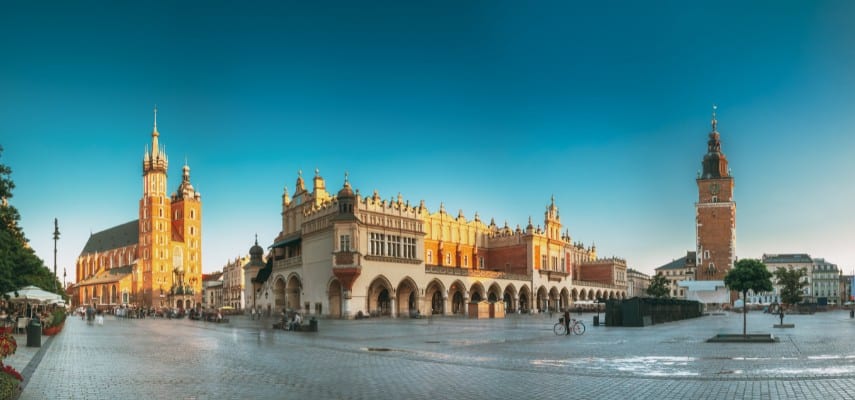
South Korea. The very name conjures images of bustling Seoul, K-pop idols, futuristic skyscrapers, and ancient palaces. But what if you crave a different side of Korea? A vibrant coastal city where mountains meet the sea, ancient temples nestle amidst urban sprawl, and the food scene is as dynamic as its history – all without the hefty price tag often associated with the capital? Enter Busan, South Korea’s second-largest city, a captivating destination that offers a rich tapestry of experiences. And the best part? Visiting Busan doesn’t have to break the bank, especially when it comes to flights.
This comprehensive guide will unravel the secrets to finding cheap flights to Busan and equip you with everything you need to plan an unforgettable, budget-friendly adventure. From its mesmerizing history and must-see attractions to practical travel tips, accommodation, transportation, and the best time to visit, prepare to fall in love with the Pearl of the South Sea.
The Allure of Busan: More Than Just a Second City

Related Articles about Busan on a Budget: Your Guide to Affordable Flights and an Unforgettable Coastal Escape:
- Krabi: A Tropical Paradise Unveiled – Your Ultimate Guide to Sun, Sand, and Serenity
- Miami’s Magic: A Guide to the City’s Best Hotels and Unforgettable Experiences
- Kazakhstan: Unveiling the Heart of Central Asia
- Gateway to the Andes: Unveiling the Best Stays and Secrets of Machu Picchu
- Unlocking the Land of Smiles: Your Ultimate Guide to Cheap Flights and an Unforgettable Bangkok Adventure
Busan holds a unique charm that sets it apart from Seoul. It’s a city defined by its dramatic coastline, where golden sand beaches like Haeundae and Gwangalli offer stunning views and lively atmospheres. Towering mountains provide a majestic backdrop, dotted with serene Buddhist temples that have stood for centuries. The city is a bustling port, giving it a distinct maritime character reflected in its world-famous seafood markets and fresh culinary scene.
Beyond its natural beauty, Busan is a cultural powerhouse. It’s home to the prestigious Busan International Film Festival (BIFF), a hub for street art and quirky villages, and a place where modern innovation gracefully coexists with deep-rooted traditions. It’s less frantic than Seoul, offering a more relaxed pace while still delivering all the excitement and energy you’d expect from a major Korean city.
Cracking the Code: Finding Cheap Flights to Busan
Your dream Busan trip begins with an affordable flight. While direct flights from outside Asia can be pricey, a strategic approach can significantly reduce costs.
-
Be Flexible with Your Dates: This is arguably the most crucial tip. Flight prices fluctuate dramatically based on the day of the week, month, and season.
- Mid-week travel (Tuesday-Thursday) is often cheaper than weekend travel.
- Shoulder seasons (late spring: April-May, early autumn: September-October) offer pleasant weather and potentially lower fares than peak summer or holiday periods.
- Avoid major Korean holidays like Chuseok (Korean Thanksgiving) and Seollal (Lunar New Year), as well as summer vacation (July-August) when domestic travel spikes.

-
Utilize Flight Comparison Websites: Websites like Skyscanner, Google Flights, Kayak, and Momondo are invaluable tools.
- "Everywhere" or "Anywhere" Search: If you’re flexible about your initial destination within Asia, you might find cheaper flights to a hub city (e.g., Tokyo, Taipei, Hong Kong, Singapore, Kuala Lumpur) and then a separate, low-cost flight to Busan.
- Price Alerts: Set up alerts to be notified when prices drop for your desired route.
- "Flexible Dates" Option: Many sites allow you to view a calendar or graph of prices over several months, helping you pinpoint the cheapest days.
-
Consider Budget Airlines and Connecting Flights:
- Within Asia: Many budget carriers operate extensive routes to Gimhae International Airport (GIM) in Busan from other Asian hubs. Look for airlines like Jeju Air, Jin Air, T’way Air, Air Busan, Peach Aviation, and AirAsia.
- Two-Leg Journey: Often, flying from your home country to a major Asian hub (e.g., Tokyo Narita (NRT), Osaka Kansai (KIX), Taipei Taoyuan (TPE), Singapore Changi (SIN)) on a larger airline, and then connecting to Busan on a budget carrier, can be significantly cheaper than a single ticket. Factor in layover times and baggage allowances carefully.
-
Book in Advance (But Not Too Far): Generally, booking 2-4 months out for international flights yields the best prices. Booking too early (6+ months) or too late (within a few weeks) can often be more expensive.
-
Clear Your Cookies/Use Incognito Mode: Airlines sometimes track your searches and may subtly increase prices for routes you’ve repeatedly viewed. Browsing in incognito/private mode or clearing your browser cookies can sometimes help.
-
Be Savvy with Layovers: Longer layovers (6-12 hours) can often lead to cheaper flights. If you’re adventurous, a layover of 24+ hours can even allow for a quick exploration of another city, effectively giving you two destinations for the price of one flight!
A Glimpse into Busan’s Rich History
Busan’s history is as layered and captivating as its landscape. Its strategic location as a port city has shaped its identity for millennia.
The area around Busan has been inhabited since prehistoric times, with evidence of settlements dating back to the Gaya Confederacy period (42–562 AD). During the Joseon Dynasty (1392-1910), Busan, then known as Dongnae, became a crucial port for trade and diplomatic missions, particularly with Japan. It was the site of significant battles during the Imjin War in the late 16th century, showcasing its enduring strategic importance.
However, Busan’s most defining historical period came during the Korean War (1950-1953). As North Korean forces advanced, Busan became the temporary capital of South Korea and the last bastion of defense for the United Nations forces. Millions of refugees poured into the city, dramatically swelling its population. This period of intense hardship and resilience left an indelible mark on Busan. The makeshift shantytowns built by refugees eventually evolved into vibrant communities like Gamcheon Culture Village, and the spirit of survival and community fostered during this time continues to resonate.
Post-war, Busan transformed into a vital industrial and economic hub, driving South Korea’s rapid modernization. Today, its history is palpable in its bustling markets, preserved cultural sites, and the enduring strength of its people, offering a fascinating narrative that complements its modern dynamism.
Top Attractions: Experiencing Busan’s Diversity
Busan offers an incredibly diverse array of attractions, catering to every interest.
-
Gamcheon Culture Village: Often dubbed the "Santorini of Korea," Gamcheon is a vibrant labyrinth of narrow alleys, colorful houses cascading down a hillside, and whimsical street art. Once a shantytown for Korean War refugees, it was transformed into a living art piece by local artists and residents. Spend hours getting lost, discovering hidden cafes, and snapping photos of the iconic Little Prince statue.
-
Haedong Yonggungsa Temple: This is a truly unique and breathtaking Buddhist temple. Unlike most Korean temples nestled in mountains, Haedong Yonggungsa is perched dramatically on a rocky cliff overlooking the East Sea. The sound of crashing waves provides a meditative backdrop, and the vibrant colors of the temple against the blue ocean are unforgettable, especially at sunrise.
-
Haeundae Beach: Busan’s most famous beach, Haeundae is a long stretch of golden sand flanked by towering skyscrapers and a lively promenade. It’s perfect for sunbathing, swimming, or simply people-watching. In the evenings, street performers entertain, and the area comes alive with restaurants and bars.
-
Gwangalli Beach: Known for its stunning views of the Gwangan Grand Bridge, which illuminates in spectacular fashion every night. Gwangalli is a popular spot for evening strolls, cafe hopping, and enjoying the vibrant atmosphere. Don’t miss the drone light show that often takes place on Saturday nights.
-
Jagalchi Fish Market: A sensory overload in the best possible way. As Korea’s largest seafood market, Jagalchi is a bustling hub where you can see, smell, and taste an incredible array of fresh and dried seafood. Downstairs, vendors hawk their catches; upstairs, restaurants will cook your chosen seafood on the spot. It’s an authentic, albeit sometimes pungent, Busan experience.
-
BIFF Square: Originally created to commemorate the Busan International Film Festival, this area in Nampo-dong is now a vibrant street food haven and a popular shopping district. Indulge in local delicacies like tteokbokki (spicy rice cakes), hotteok (sweet pancakes with seeds), and eomuk (fish cakes). Look for the handprints of famous directors and actors embedded in the ground.
-
Taejongdae Park: Located on the southernmost tip of Busan, Taejongdae is a natural park known for its dramatic cliffs, dense forest, and a beautiful lighthouse. Take the Danubi train (a hop-on, hop-off tram) to explore the various viewpoints, including the famous observatory. The views of the ocean are spectacular, especially on a clear day.
-
Beomeosa Temple: One of Korea’s oldest and most important Buddhist temples, Beomeosa is nestled on the slopes of Geumjeongsan Mountain. Dating back to the Silla Dynasty (678 AD), it offers a serene escape from the city’s hustle and bustle. Its intricate architecture, ancient stone pagodas, and tranquil courtyards are a testament to centuries of devotion.
-
Busan Tower at Yongdusan Park: For panoramic views of the city and its harbor, head to Busan Tower. Located within the charming Yongdusan Park, the tower offers a 360-degree observation deck. The park itself is a pleasant place for a stroll, with various monuments and statues.
Navigating Busan: Transportation Made Easy
Getting around Busan is surprisingly easy and affordable, thanks to its efficient public transportation system.
-
Gimhae International Airport (GIM) to City Center: From GIM, you can take the Busan-Gimhae Light Rail Transit (BGLRT) which connects directly to the Busan Metro Line 2 at Sasang Station. Alternatively, airport limousines and local buses offer direct routes to major areas like Haeundae and Nampo-dong. Taxis are also readily available.
-
Busan Metro: The subway system is clean, safe, and covers most major attractions. It’s the most convenient way to get around. Lines are color-coded, and signs are in Korean and English.
-
Buses: Busan’s bus network is extensive, reaching areas not covered by the subway. While slightly more complex to navigate for first-timers, apps like Naver Maps or KakaoMap provide excellent real-time bus information.
-
Taxis: Taxis are relatively affordable, especially for short distances or when traveling in a group. Look for "Regular" (Ilban) taxis. For ride-hailing, download the Kakao T app.
-
T-Money Card: Purchase a T-Money card at any convenience store (e.g., GS25, CU, 7-Eleven) upon arrival. Load it with money, and you can use it for subways, buses, and even some taxis and convenience store purchases. It offers discounted fares compared to single-use tickets.
Accommodation Options for Every Budget
Busan offers a wide range of accommodation, ensuring there’s something for every traveler’s budget.
-
Budget (Under $50/night):
- Hostels: Abundant, especially in popular areas like Haeundae, Seomyeon, and Nampo-dong. They offer dorms and private rooms, often with social common areas.
- Guesthouses: Similar to hostels but often smaller and more intimate, sometimes offering a more traditional Korean feel.
- Jjimjilbangs (Korean Bathhouses): For the adventurous and truly budget-conscious, jjimjilbangs offer a unique overnight experience. You sleep on mats in communal sleeping areas after enjoying the saunas and baths. Not for everyone, but incredibly cheap!
-
Mid-Range ($50-$150/night):
- Boutique Hotels: Stylish and comfortable hotels offering good value.
- Business Hotels: Often found near subway stations, providing modern amenities and efficiency.
- Serviced Apartments: Ideal for longer stays or groups, offering kitchenettes and more space.
-
Luxury (Above $150/night):
- Beachfront Hotels: High-end hotels like the Park Hyatt Busan or Paradise Hotel Busan offer stunning ocean views and premium services, especially around Haeundae Beach.
Popular Areas to Stay:
- Haeundae: Best for beach lovers, nightlife, and upscale dining.
- Seomyeon: Central, great for shopping, nightlife, and easy access to all parts of the city via subway.
- Nampo-dong: Ideal for exploring markets, historical sites, and street food. More traditional and bustling.
Essential Travel Tips for a Smooth Trip
- Connectivity: Purchase an eSIM or a local SIM card upon arrival for easy navigation and communication. Wi-Fi is also widely available.
- Language: While many young Koreans and those in tourist-centric areas speak some English, learning a few basic Korean phrases (hello, thank you, excuse me) will go a long way and be greatly appreciated. Download a translation app like Papago.
- Currency: The local currency is the Korean Won (KRW). Credit cards are widely accepted, but it’s good to carry some cash for street food vendors or smaller shops.
- Apps: Download Kakao T (for taxis and ride-sharing), Naver Maps or KakaoMap (for public transport and navigation – Google Maps is less effective in Korea), and Papago (for translation).
- Etiquette: Bowing is a common greeting (especially to elders), remove your shoes when entering homes or some restaurants, and be mindful of quietness in public transport.
- Safety: South Korea is incredibly safe. You can generally feel comfortable walking alone even late at night.
- Water: Tap water is safe to drink, though many prefer bottled water.
- Plug Type: Korea uses Type F (Schuko) and Type C (Europlug) sockets, with a voltage of 220V. Bring an adapter.
Best Time to Visit Busan
Choosing the right time to visit can significantly enhance your experience and potentially help with flight prices.
- Spring (April-May): Arguably the most beautiful time to visit. Mild temperatures, clear skies, and vibrant cherry blossoms transform the city. Festivals are abundant. This is a popular time, so book flights and accommodation in advance.
- Autumn (September-October): Another fantastic season. Crisp, pleasant weather, stunning autumn foliage in the mountains surrounding the city, and a comfortable atmosphere for sightseeing. Like spring, it’s a peak season.
- Summer (June-August): Hot, humid, and often rainy (monsoon season in July). However, it’s also beach season, with Haeundae and Gwangalli bustling with activities and festivals. Expect larger crowds and potentially higher prices.
- Winter (November-March): Cold and dry, with occasional snow. It’s the least crowded season, which can mean better deals on flights and accommodation. Winter festivals, like the Busan Christmas Tree Festival, add a magical touch. Many indoor attractions and hot springs offer warmth.
By strategically planning your visit during the shoulder seasons (late spring or early autumn) or even during the winter, you might snag those coveted cheap flights and enjoy a less crowded, yet equally enchanting, Busan.
Your Busan Adventure Awaits
Busan is a city that defies expectations – a dynamic metropolis with a laid-back coastal vibe, a rich history interwoven with modern artistry, and a culinary scene that will delight your taste buds. With the right strategies, finding cheap flights to this South Korean gem is entirely achievable, opening the door to an unforgettable adventure. So, start setting those flight alerts, pack your bags, and prepare to discover the vibrant, charming, and affordable wonders of Busan.





